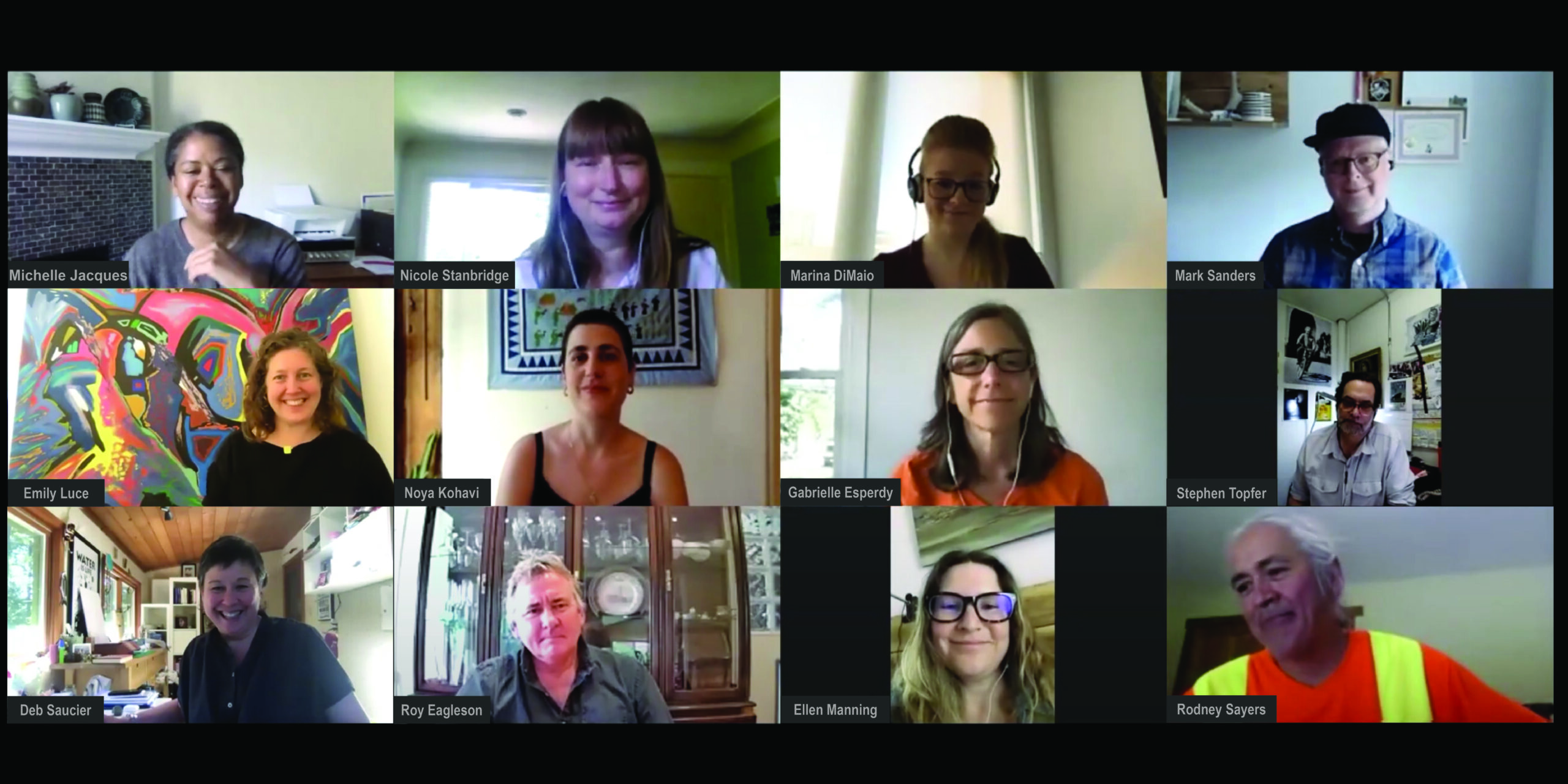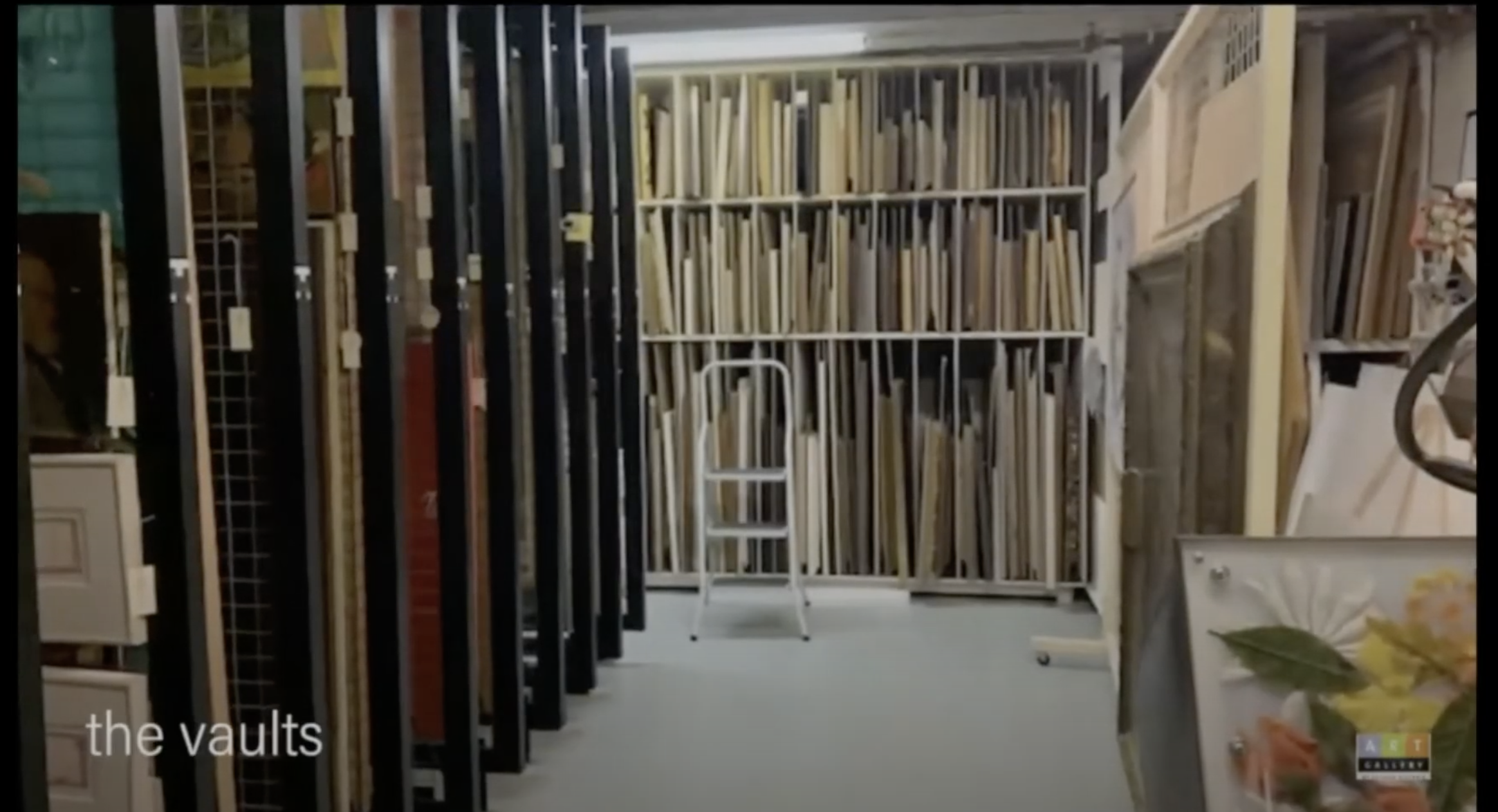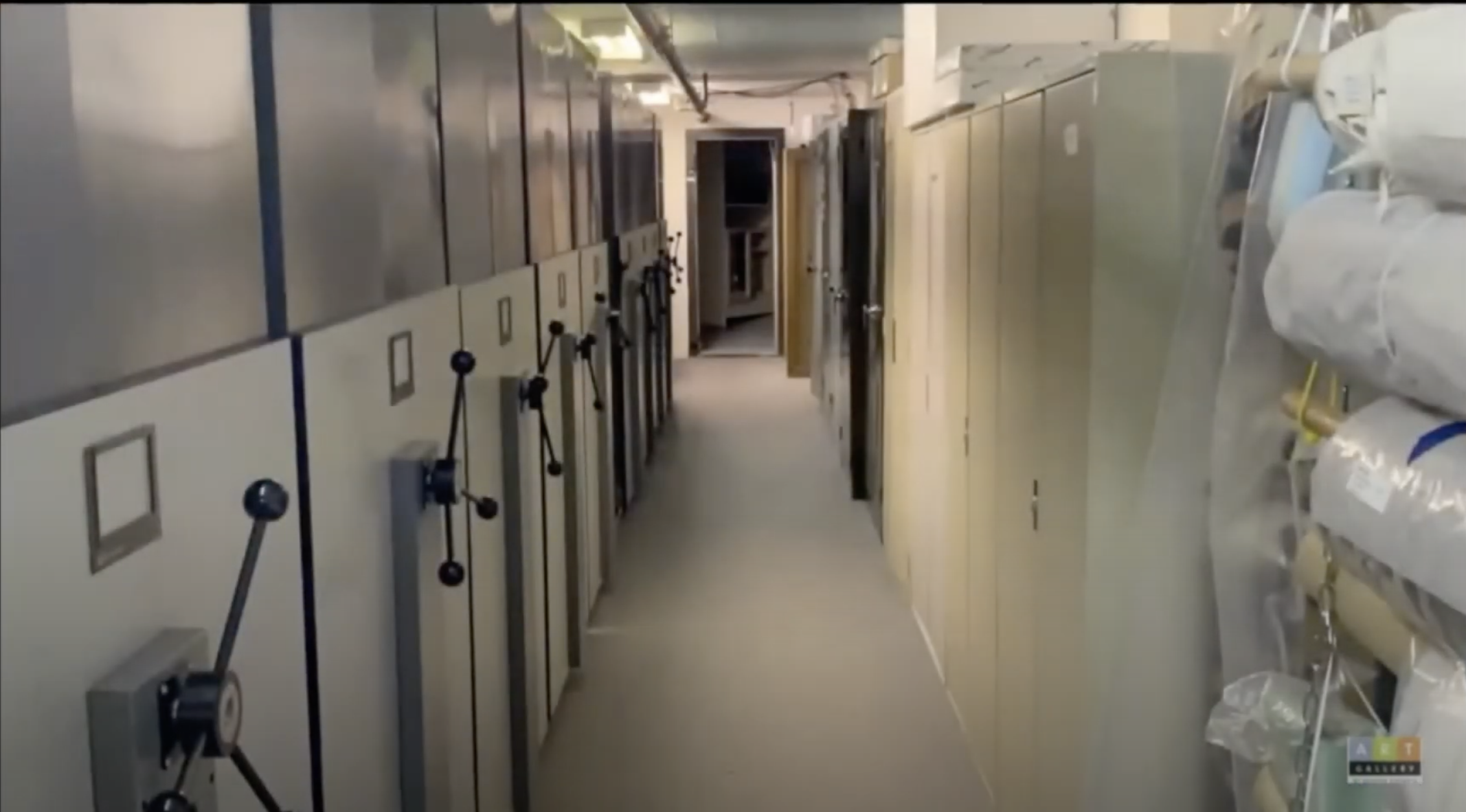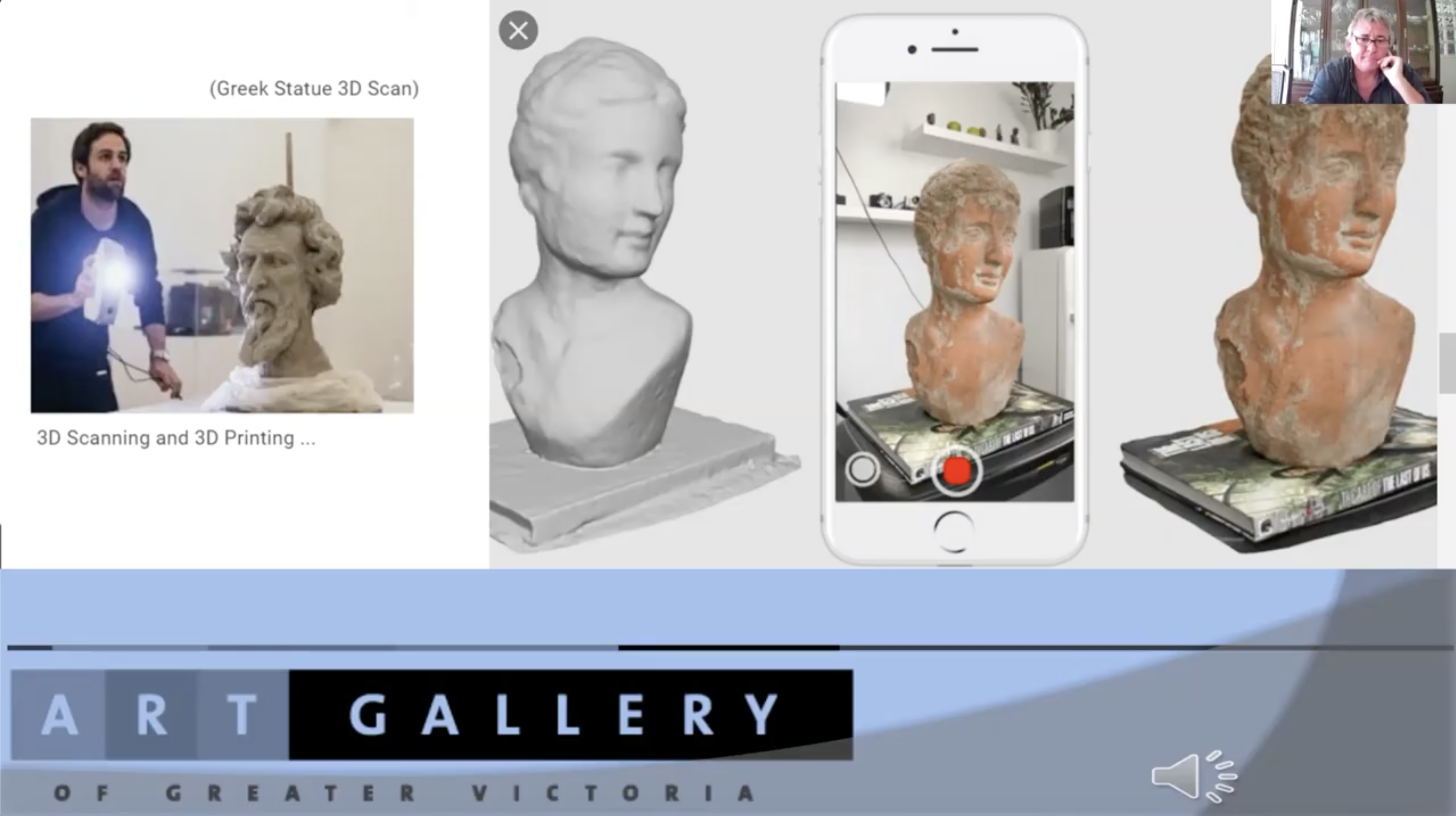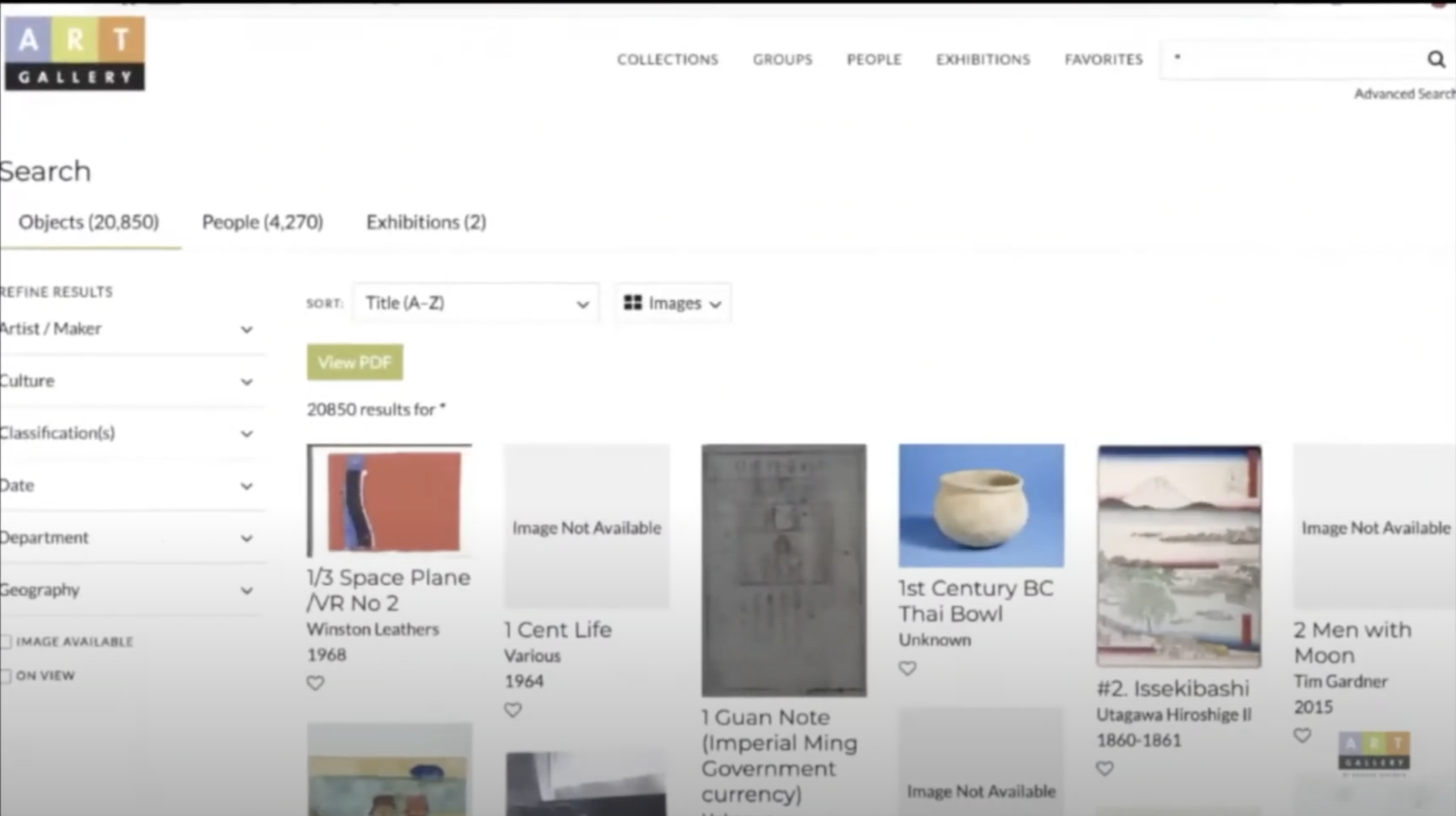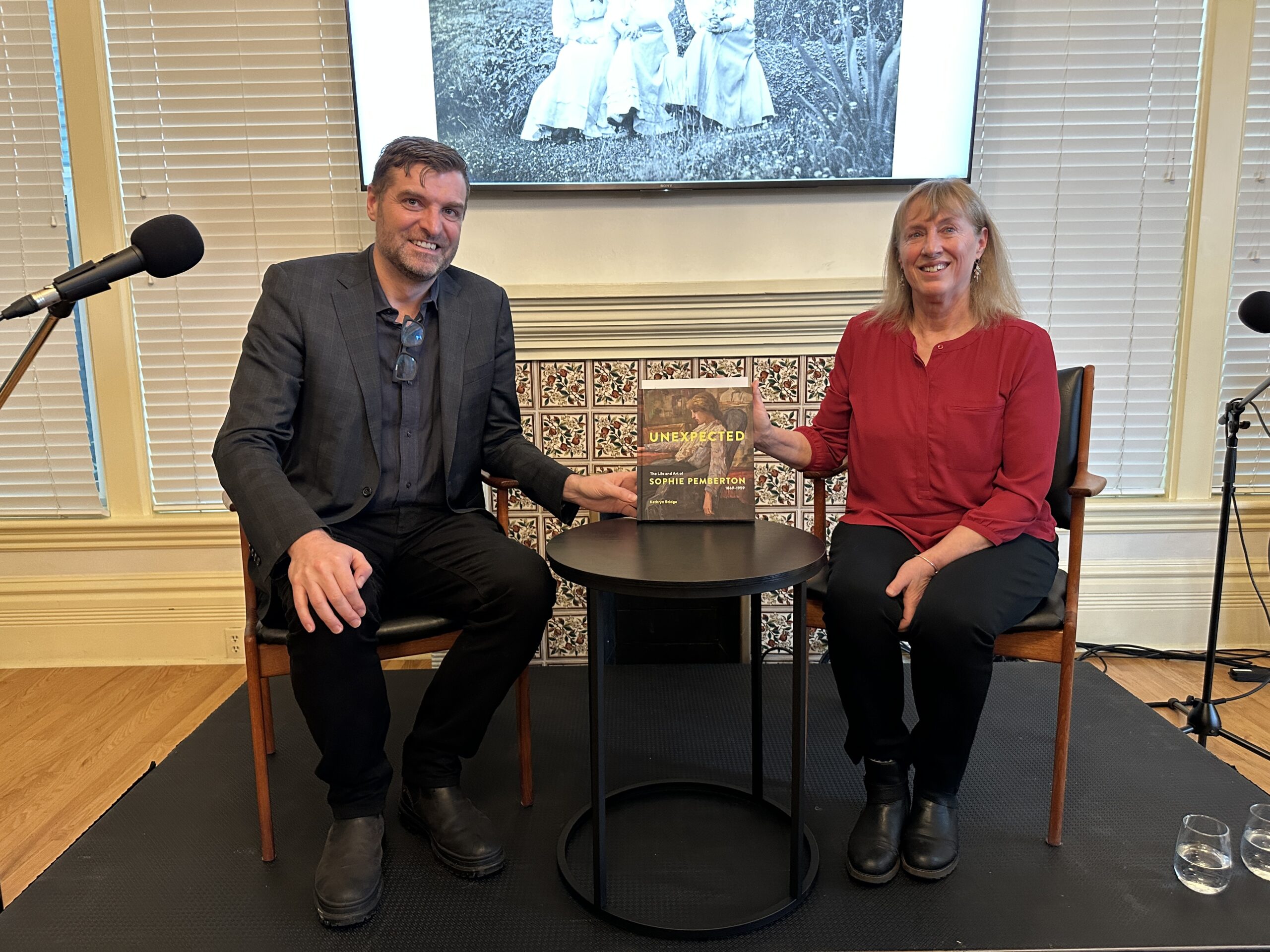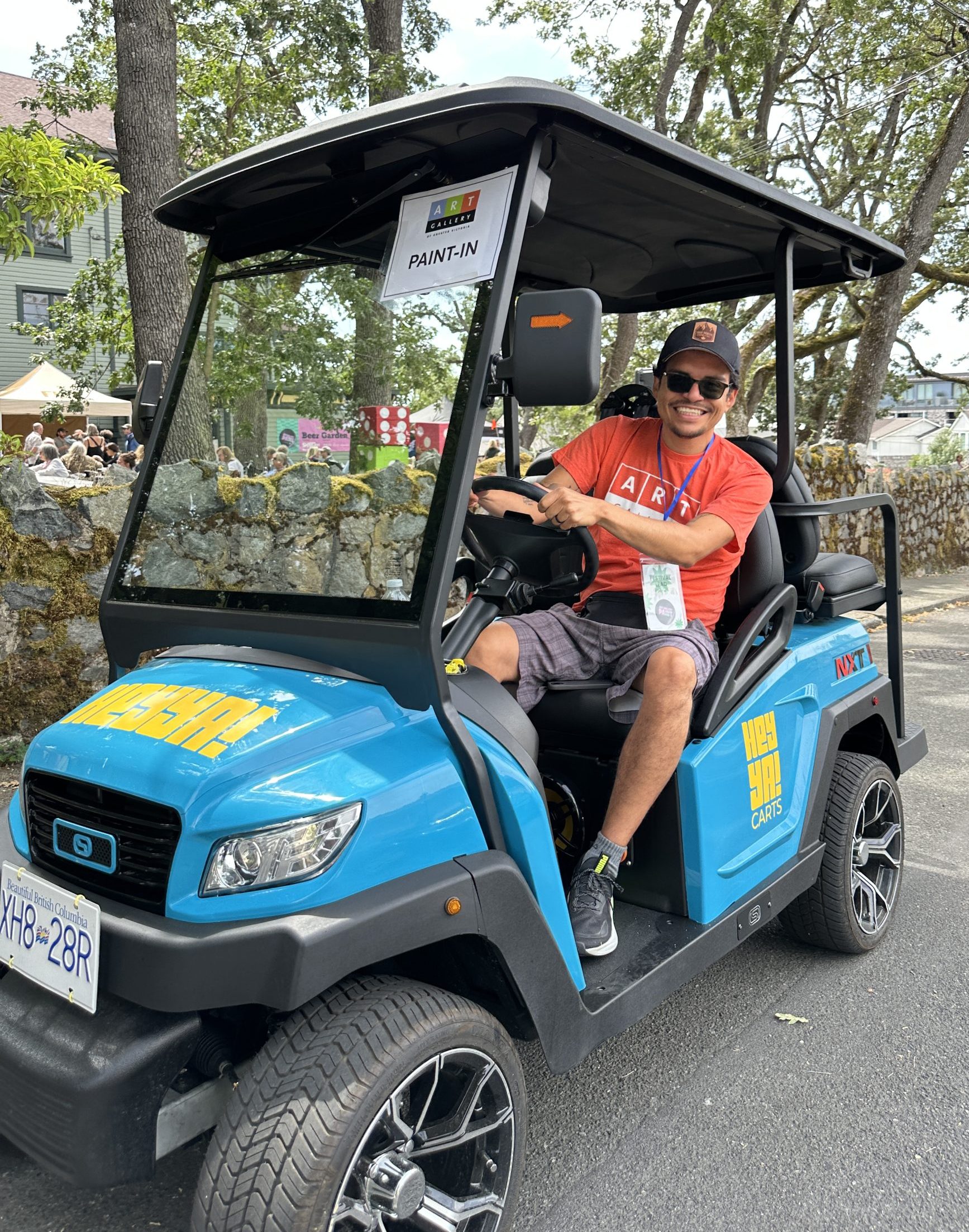By Marina DiMaio, Digital Potentials Advisory Coordinator
Beginning in the summer of 2020, and with the assistance of a Canada Council for the Arts Digital Literacy and Intelligence grant, the AGGV established a cyber support community to assist with the gallery’s increasing need for digital support and guidance as it undertakes a longterm experimental digital project that further considers the connections between digital literacy and curatorial thinking, and how these connections might be applied. The ideas highlighted here are a brief summary of the questions and considerations that came to the forefront of the committee’s preliminary explorations.
As the year draws to a close and as we reflect on our time spent physically distanced from family, friends and community, we are reminded that although we may feel the effects of the COVID-19 pandemic more than ever, by now, we also know that physical separation does not stop our ability to make meaningful connections with places, ideas and each other. Like many institutions, in light of these new physical distancing landscapes, the AGGV has been wrestling with its digital strategies in new ways, revamping its digital identity and engaging with increasingly creative investigations of how we might make meaningful connections in virtual spheres. At the forefront of this grassroots exploration is the AGGV’s Digital Potentials Advisory, an interdisciplinary group of artists, designers, technologists, educators and researchers from across the continent who are enthusiastically committed to digital scholarship, data ethics, radical public access and citizen engagement, and the longterm transformation of existing museum and gallery models.
Each of the advisors come to this cyber support community as expert collaborators with strong interests in exploratory problem solving, so it was no surprise that the first milestone for this ongoing project began with a series of Zoom presentations and conversations focusing on defining strategic digital potentials for one of the AGGV’s untapped resources — the collection database, a digital archive of over 22,000 objects. The exchange that took place around this virtual table brought to our attention a range of cutting edge arts, education and social justice reference projects and precedents for digital engagement that are — to borrow from Aaron Ambroso’s recent essay in artnet News, “Museums are being tasked with radically transforming the way they work” — “pushing the conversations happening about museums in a less-travelled direction.”
At this point many art galleries have reopened their doors to the public with new health and safety guidelines in place, but the increasing interest in online viewing, digital programming and direct audience interaction through social media is here to stay. Many museums are attracting more online traffic and experiencing greater visitor numbers to their websites, so the need to exist beyond the institutional structure while continuing to address urgent contemporary issues is at the forefront of any digital potentials. In examining the AGGV’s preexisting online collections database — accessed by the public through a popular library-like interface known as eMuseum — we have found that experimental engagement models are showing us that it’s not enough for institutions to simply photograph the objects hidden in their vaults and put the images online. Just as curating an exhibition is much more than building a plinth and deciding where to place it in a galley space, digital programming is nuanced and layered with considerations of design, machine learning, computer vision, metadata, and search engine optimization. The objects in our collection are living objects, with real histories and undeniable stories to tell. So just as the crackles on a painting, the patina covering a sculpture, or the provenance on an exhibition label might tell us something about the life of that object, the digital trails and navigational experiences that are carefully curated in virtual spaces similarly have the power to re-center, not the physical objects themselves, but rather the stories, narratives, themes, critiques and secrets hidden between objects and within databases.
So in looking at the digital potentials lying behind the AGGV’s database we are certainly interested in the clever tropes for interactivity provided by applications utilizing augmented or virtual reality, but we are also interested in revisiting the questions that have been central to the work that we already aim to do in public programming and education. If the objects could speak what would they tell us? If there are many voices in a collection, what themes would they point to over and over again? Can artificial intelligence potentials help us tell these stories in more creative ways, on a larger scale? How can we create portals that uphold multilayers of Indigenous knowledge? What about digital literacy and privilege? What does it mean to have access to these resources? If a group of contemporary artists were to lead us in a series of digital tours, what new trails would we discover? Can we translate, reframe, or dismantle digital hierarchies by wandering off the beaten digital track? Is there an equivalent digital approach for curiously, playfully or intuitively meandering through an exhibition space? How can we use software responsibly to create a sense of community and establish a collaborative spirit? What constitutes radical access to a collections database in 2020?
The Digital Potentials Advisory is currently working towards translating this preliminary phase of primary research into sustainable, concrete multiphase actions for future AGGV digital capacity building, with the reinvigorated goal not just to adjust current digital structures, but to radically and deeply question them.
Roy Eagleson is a Professor in the Department of Electrical and Computer Engineering at the University of Western Ontario and an expert in Human Computer Interface Design
Gabrielle Esperdy is an architectural and urban historian and cultural critic who is increasingly engaged with considerations of the historical project in the age of big data.
Noya Kohavi is a queer feminist technologist, consultant, and NEW INC member whose work utilizes computer vision and computational linguistics to generate new narratives and insights, focusing on data ethics and a queer approach to computing.
Emily Luce is an independent designer, artist, researcher, expert collaborator, and key instigator for the AGGV’s Digital Potentials Advisory team.
Mark Sanders is a photographer, typographer, designer, web developer and teacher whose work situates “interfaces” as tools for actively cultivating knowledge production.
Deborah Saucier is the President and Vice-Chancellor of Vancouver Island University, as well as an experienced administrator, accomplished neuroscientist and devoted educator, deeply committed to student success, Indigenous education, reconciliation and community engagement.
Klewetua, Rodney Sayers is a Nuu Chah Nulth artist whose work has been deeply influenced by his linguistic work with the elder fluent speakers of his community on preserving and revitalizing the Nuu Chah Nulth language.
